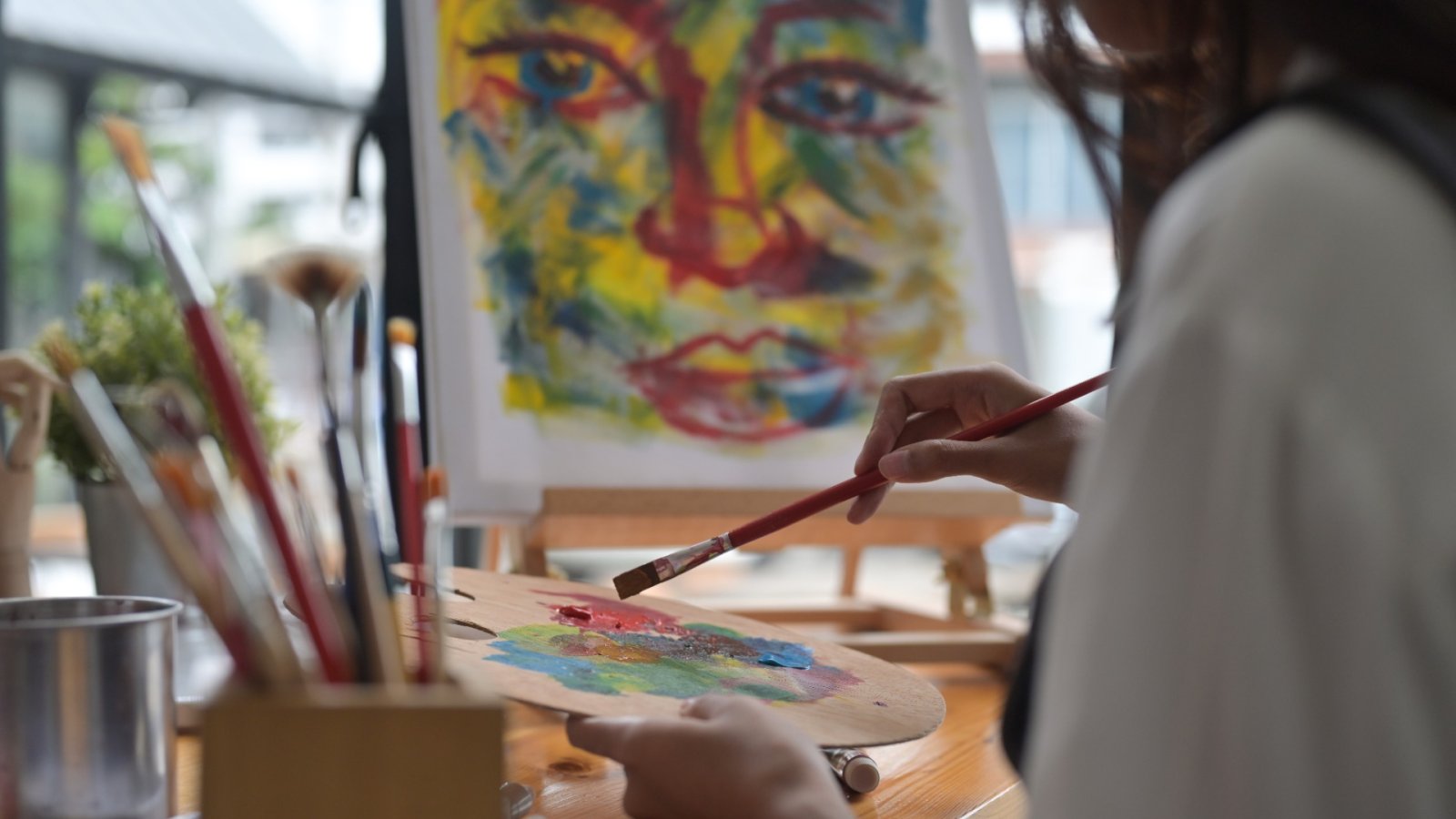Mental health is crucial to our overall happiness and life satisfaction. Finding positive ways to manage stress, emotions, and mental wellness is so important. Art has shown great promise as an avenue for self-care, connection, and coping. In this piece, we'll explore art's therapeutic benefits, forms of creative expression, and how to start an art practice for mental health.
What does art for mental health even mean?
Across cultures, art has served as a vessel for the human experience. More than entertainment, art allows the deep processing of feelings that are too dense for words. Through creative healing, it offers an outlet and respite during hard times. Art creates space to understand ourselves at a soulful level. So, whether through drawing, painting, sculpture, or other mediums, art gives voice to private worlds within. It shares triumphs, tragedies, and everything between with empathy and care. When under pressure, art channels energy to soothing effect. It replaces worry with wonder, even momentarily, through painting, music, movement and more. The artistic process soothes both mind and spirit. Over time, these respites strengthen our ability to weather life's storms with grace.
It’s important to know that every person's path to well-being is unique. Exploring various artistic mediums allows one to discover the most personally fulfilling avenues for expression, mindfulness and care of the soul. Here are some popular creative outlets to consider:
- Painting for Presence
With its sensory colors, textures and compositions, painting invites quiet self-reflection and presence. Losing oneself amidst brushstrokes fosters clarity and release.
- Drawing for Focus
Requiring minimal materials, drawing cultivates focus and attention to detail during times of inner turmoil. Each line shares fragments of the inner world.
- Sculpting for Connection
Shaping malleable materials by hand forms a tactile bond between artist and artwork. Clay, wood and metal offer grounding in emotional experience.
- Music for the Spirit
Across instruments and genres, music transports one to profound realms of feeling. Both performance and listening uplift mood and connection to others.
- Dance as Movement Medicine
Synchronizing body and rhythm transforms pent-up energy. Free-flowing movement nourishes mind-body awareness and liberation.
- Writing for Insight
Whether through journaling, poetry or prose, the written word weaves order from inner chaos. Putting pen to paper leads to self-understanding and release.
Each medium cultivates well-being uniquely. Experimenting empowers one to craft the personalized artistic self-care routine that reassures the soul.
Healing through art
Whether playing music, painting scenery or crafting pottery, losing oneself in the creative process uplifts mood and reduces stress hormones. Studies show art lowers blood pressure, relaxes muscles and distracts from worries through engaging both sides of the brain. Channeling thoughts and emotions onto the canvas, page or stage brings inner landscapes into focus. Artists gain clarity by experimenting with color, form and metaphor to depict inner and outer worlds. Over time, this cultivation of self-awareness fosters personal growth. Creative outlets provide containment for difficult feelings. By processing and releasing pent energy through art, we develop healthier strategies for anger, sadness and fear. Managing emotional volatility becomes easier with artistic practice. Conveying intangible experiences through visual or performance art trains us to interpret and share subtle aspects of being. This nurtures communicative, listening and perspective-taking abilities essential for well-relating.
Completing artistic projects, however humble, grows self-trust. Meeting creative challenges fosters pride in one’s vision and skills. Over time, this blossoms self-esteem and a compassionate inner witness. Overall, cultivating creativity equips us with lifelong tools for wellness, connection, fulfillment and care of the soul.
Starting Your Art Therapy Journey: A Step-by-Step Guide
1. Explore Different Art Forms: Try out a variety of creative outlets, such as painting, drawing, sculpting, music, dance, or writing. Experimenting with different mediums will help you find the one that feels most meaningful and enjoyable.
2. Create a Dedicated Space: Set up a comfortable and peaceful area at home for your art therapy sessions. Make sure it’s free from distractions and stocked with all the materials you’ll need.
3. Schedule Regular Time: Incorporate art therapy into your routine by dedicating specific times for creative expression. Consistency is key to fully experiencing the therapeutic benefits.
4. Be Kind to Yourself: Focus on the process rather than the outcome. Art therapy is about self-expression and emotional exploration, so embrace mistakes and allow yourself to create without judgment.
5. Seek Guidance When Needed: If you need extra support or want to deepen your practice, consider working with a certified Art Therapy Practitioner or enrolling in an accredited course.






